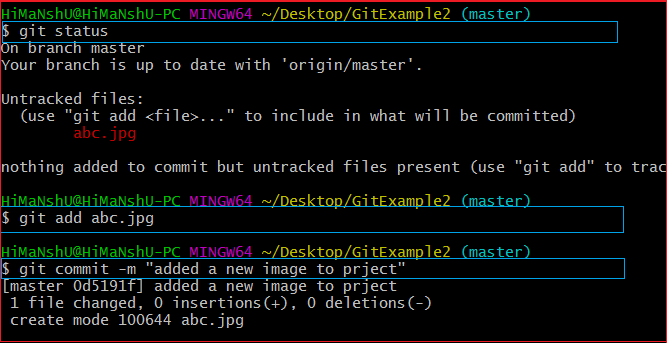
- GIT ADD REMOTE PATH SOFTWARE
- GIT ADD REMOTE PATH PLUS
- GIT ADD REMOTE PATH FREE
- GIT ADD REMOTE PATH MAC
You specify a repository name, the hosting provider will append ".git" to the remote URL for you.

GIT ADD REMOTE PATH PLUS
You can click the plus sign on the left or the create repository button to begin the process of creating a remote repository. Here, you can see the Bitbucket interface. A git hosting provider usually provides a simple interface for creating a remote repository. Next, we will discuss creating a remote repository. Notice the ".git" added to the end of the URL to signify that this is a remote repository. Here's a typical URL for a remote repository hosted on Bitbucket. By convention, remote repository names end with ".git". The root directory of a remote repository is similar to the ".git" directory in a local repository. Because nobody works with the repository locally, there is usually no working tree or staging area on a remote repository. A remote repository is often a bare repository. The on-premise options can be hosted in a data center or in the cloud. On-premise options include Bitbucket Server, GitHub Enterprise, as well as some open source on-premise options. Hosted options for remote git repositories include Bitbucket and GitHub. And it often integrates with other systems like issue trackers and continuous delivery pipelines. It often acts as the central source of truth or official state of the project. A remote repository is usually a professionally managed repository that is hosted in a data center or in the cloud. We will start by describing a remote repository. In this video, we will discuss creating a remote repository. It will probably take you about 5-10 hours to go through one of the two paths, but your mileage may vary. This course tries to be as concise as possible. However, most of the knowledge that you gain in this course applies to Git itself, and you can apply this knowledge to other hosted Git providers (such as GitHub).
GIT ADD REMOTE PATH FREE
Bitbucket is free for teams of up to 5 people, including private repositories. This course uses Bitbucket () as the hosted provider for remote Git repositories. If you use the command line path through the course, you can also use Linux.
GIT ADD REMOTE PATH MAC
You can watch the videos and take the quizzes from your phone if you want, but the hands-on labs require you to have a Windows or Mac computer.

Besides, repetition is good for learning :) Eventually, you might want to go through both paths, so that you can decide which tool to use for specific tasks. If you are not experienced with a command line, we highly suggest that you go through the Sourcetree path. One path assumes that you have experience using a command line interface, and the other path uses the Sourcetree graphical client. This is especially true if you currently "know just enough Git to be dangerous". This course assumes no previous knowledge of Git, but if you do have experience with it, you may find this course to be both useful and challenging. In this course, you will not learn everything there is to know about Git, but you will build a strong conceptual understanding of the technology, and afterward will be able to confidently dig deeper on any topic that interests you. You could also use Git to manage the many continuously improving revisions of that book that you are writing. It is a core component of DevOps, continuous delivery pipelines and cloud-native computing.

It is used by most major technology companies, and is assumed knowledge for many modern programming and IT jobs. This allows the team to continuously improve its product. Git manages team files for large and small projects.
GIT ADD REMOTE PATH SOFTWARE
Git is open source software originally created by Linus Torvalds. The Version Control with Git course provides you with a solid, hands-on foundation for understanding the Git version control system.


 0 kommentar(er)
0 kommentar(er)
